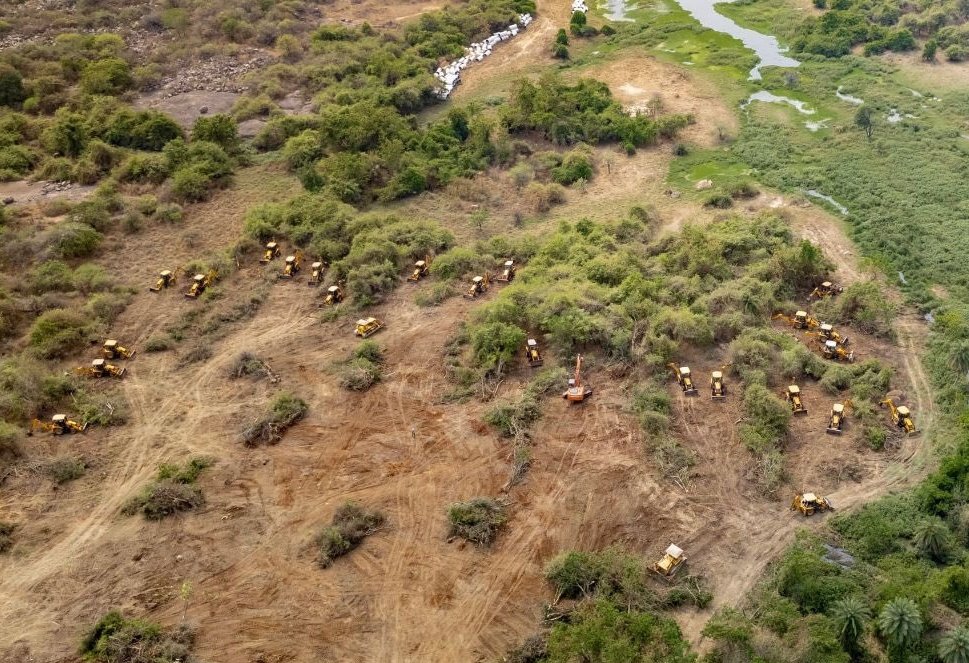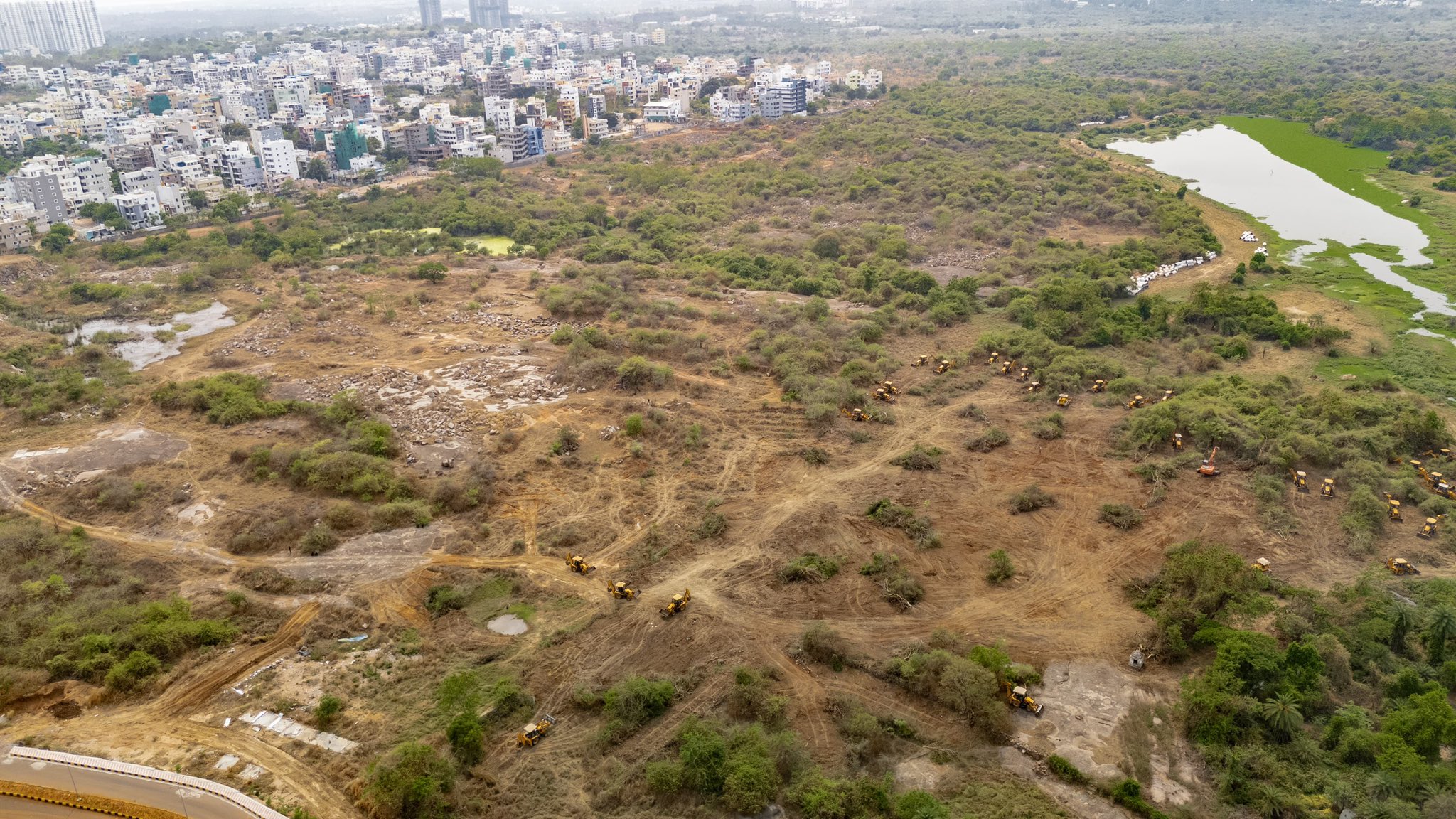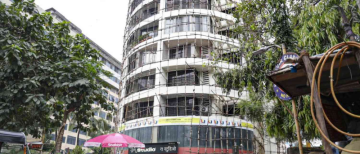Hyderabad University, once celebrated for its lush greenery and rich biodiversity, has become the center of public outrage following the destruction of trees and forested areas on its campus. The incident has sparked protests from students, environmental activists, and concerned citizens, highlighting the delicate balance between development and ecological preservation.
“Authorities at HCU University are removing trees and rocks with JCBs. Students protesting the destruction of green lands are being arrested by police.” pic.twitter.com/kth4iGN44z— keshaboina sridhar (@keshaboinasri) March 30, 2025
 \
\
The Issue: Trees Cut Without Permission
Reports indicate that several trees were chopped down across the University of Hyderabad (UoH) campus to make way for new building projects. Alarmingly, this was done without obtaining prior permission from the Forest Department, as required by law. Ch Shivaiah, Divisional Forest Officer (DFO), stated that the university must follow legal protocols and promised an investigation into the extent of damage caused. Legal action is expected to follow based on the findings.
Adding to the distress, a spotted deer was killed by stray dogs after being displaced from its habitat due to tree-cutting activities. This tragic incident underscores the immediate impact of deforestation on wildlife within the campus.
_1743574693.jpeg)
Protests and Concerns
Students and activists have raised serious concerns about the ecological damage caused by these actions. The university campus is home to hundreds of species of flora and fauna, including 734 flowering plants, 80 bird species, and 10 mammal species. Many of these are endangered or play a crucial role in maintaining the ecosystem. Activists warn that continued destruction could lead to habitat shrinkage for these species and disrupt the city's ecological balance.
The protests have gained momentum with students boycotting classes and demanding an end to land-clearing activities. Political parties have also joined the fray, criticizing the government’s decision to auction off ecologically sensitive areas near the university.
University's Defense
The university administration has defended its actions by citing developmental needs. Prof Vinod Pavarala, a university spokesperson, explained that efforts were made to minimize damage by primarily targeting eucalyptus trees while avoiding large native trees like mango and neem. He also pointed out that afforestation initiatives are regularly undertaken to compensate for tree loss.
However, critics argue that such measures are insufficient given the scale of destruction. Environmentalists emphasize that green spaces like those at UoH act as "green lungs" for Hyderabad, absorbing pollutants and replenishing groundwater levels.

A Broader Perspective
The controversy surrounding UoH reflects a larger dilemma faced by urban areas: balancing development with environmental sustainability. Hyderabad’s rapid expansion has already led to significant loss of green cover in recent years. Encroachments and land alienation have shrunk UoH’s estate by over 400 acres since its establishment in 1974. This trend raises questions about whether development can be truly sustainable if it comes at such a high ecological cost.
What Can Be Done?
To address this issue effectively, stakeholders must collaborate on solutions that prioritize both development and conservation:
-
Transparent Planning: Development projects should undergo thorough environmental assessments before implementation.
-
Community Involvement: Students, faculty members, and local residents should be included in decision-making processes regarding campus land use.
-
Enhanced Conservation Efforts: Afforestation initiatives must be scaled up alongside stricter enforcement of laws protecting green spaces.
-
Policy Reform: Governments should revisit policies related to land auctions in ecologically sensitive areas.
Conclusion
The destruction of greenery at Hyderabad University is not just a localized problem—it serves as a wake-up call about the urgency of preserving urban ecosystems amidst growing developmental pressures. While development is essential for progress, it must not come at the expense of biodiversity and environmental health. Striking this balance will require collective effort from authorities, activists, and citizens alike.
With inputs from agencies
Image Source: Multiple agencies
© Copyright 2025. All Rights Reserved Powered by Vygr Media.























